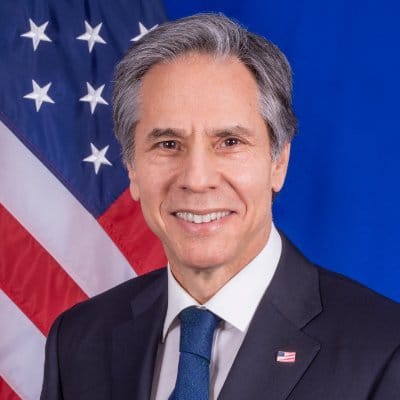Last Updated on August 22, 2024 11:24 pm by INDIAN AWAAZ
Spotlight this week remained on the Middle East, where tensions remain high and the United States is deeply involved in efforts to bring about peace. U.S. Secretary of State Antony Blinken has just concluded his latest diplomatic mission to the region—his ninth visit in a bid to broker a ceasefire between Israel and Hamas in Gaza. The stakes are incredibly high, and as Blinken himself put it, “time is of the essence” to secure this fragile ceasefire.
Blinken, along with mediators from Egypt and Qatar, is working on what’s being called a ‘bridging proposal’. This plan aims to establish an initial six-week ceasefire. During this period, a small number of Israeli hostages, specifically women, the elderly, and the sick, would be released in exchange for Palestinians currently held in Israeli prisons. The hope is that this temporary truce will pave the way for more comprehensive negotiations, which could eventually lead to the return of soldiers and the remains of the deceased, the withdrawal of Israeli forces from Gaza, and the return of displaced Palestinian civilians to their homes.
It’s important to remember that Israel has formal diplomatic ties with five Middle Eastern and North African countries: Bahrain, Egypt, Jordan, Morocco, and the United Arab Emirates. The 2020 Abrahamic Accords marked a significant step in normalising relations between Israel and these nations, despite their often complex and fraught histories. The United States, with its extensive ties across the Middle East, has played a key role in mediating these relationships, serving as a critical bridge in regional diplomacy.
However, the path to peace is anything but straightforward. Hamas, the militant group at the centre of the conflict, has not been directly involved in these ceasefire talks. They have rejected the current proposal, arguing that it leans too heavily in Israel’s favor. One of the most contentious issues is Hamas’s demand for a complete Israeli military withdrawal from Gaza—something Israel has thus far refused to consider.
When pressed about this during his visit to Qatar, Blinken made it clear that the U.S. opposes any long-term Israeli occupation of Gaza. Reports suggest that Israeli Prime Minister Netanyahu may have sought to keep troops in the Philadelphi corridor, a key strategic area along the Gaza-Egypt border. But Blinken stood firm, stating that the ceasefire agreement includes a clear schedule for the withdrawal of Israeli forces, a commitment that Israel has reportedly accepted.
Despite these diplomatic efforts, the threat of a wider regional conflict looms large. Iran and Hezbollah have vowed retaliation for recent Israeli actions, including a strike last month in Tehran that killed a senior Hamas leader. As the situation grows more dire, Blinken has stressed that there is little time left to secure a ceasefire. Both Egypt and Qatar are working tirelessly alongside the U.S. to broker a deal that could prevent this conflict from spiralling into a larger, more devastating war that might draw in Iran and Hezbollah.
On Tuesday, Blinken met with Egyptian President Abdel Fattah al-Sisi, who echoed the urgency of ending the conflict, stating that “the time has come to end the ongoing war.” Meanwhile, in Gaza, the Israeli Defence Forces reported finding the bodies of six hostages taken during a Hamas attack in October. The next few days will be critical as negotiations continue. The world watches with bated breath, hoping that these efforts will bring an end to the violence. The U.S., along with its regional partners, is racing against time to broker a ceasefire and prevent a broader conflict from erupting.

